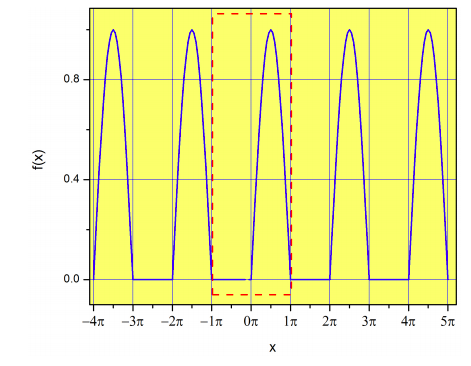1.4: The Period of a Periodic Function
- Page ID
- 106801
A function \(f(x)\) is said to be periodic with period \(P\) if \(f(x) = f(x + P)\). In plain English, the function repeats itself in regular intervals of length \(P\). The period of the function of Figure \(\PageIndex{1}\) is \(2 \pi\).

We know that the period of \(\sin (x)\) is \(2 \pi\), but what is the period of the function \(\sin (nx)\)?
The period of \(\sin (x)\) is \(2 \pi\), so:
\[\sin (nx) = \sin (nx + 2 \pi) \nonumber\]
By definition, for a periodic function of period \(P\), the function repeats itself if we add \(P\) to \(x\):
\[ sin (nx) = \sin (n(x + P)) = \sin (nx + nP)) \nonumber\]
Comparing the two equations: \(2 \pi = nP\), and therefore \(\textcolor{red}{P = 2π/n}\).
For example, the period of \(\sin (2x)\) is \(\pi\), and the period of \(\sin (3x)\) is \(2 \pi/3\) (see Figure \(\PageIndex{2}\)).

You can follow the same logic to prove that the period of \(\cos (nx)\) is \(2 \pi/n\). These are important results that we will use later in the semester, so keep them in mind!
Test yourself with this short quiz! http://tinyurl.com/k4wop6l


